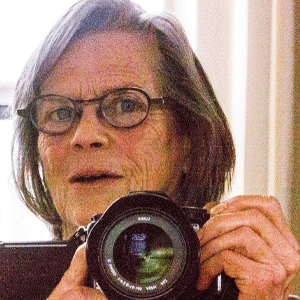M’Chigeeng:
Ojibwe Cultural Foundation Honours Traditions Old and New
Fascinating and important encounters await visitors to M’Chigeeng: the First Nation is a vigorously forward-thinking community that honours its traditions while forging educational, cultural and health and wellbeing institutions to serve its community with standard-setting schools, cultural spaces, social services and businesses.
To experience M’Chigeeng is to learn the ancient history of the First Peoples of the Great Lakes Region of Northern Ontario, the traditional crafts still practiced today, contemporary artistic expression and the grace and welcome of the summer powwow – all within a growing commercial hub of restaurants, gas stations and shopping choices nestled among the Lakeview and Kenjgewin Teg schools (including a new trades school), the health centre and the impressive cultural institution that is the Ojibwe Cultural Foundation (OCF).
At the crossroads of Highways 540 and 551, in the heart of the community, the Ojibwe Cultural Foundation’s evocative circular building houses the Museum, a beautifully curated space that displays ancient scrolls, porcupine quill boxes, ash and sweetgrass baskets, jingle dress regalia, pottery and antler carvings, pieces of historical significance and spiritual meaning. The Healing Lodge is a tranquil, circular wood-lined chamber with seating around a fire; a carved wooden tray holds the sacred plants of sweetgrass, sage, tobacco and cedar for smudging ceremonies and healing circles.
“We have a mandate to represent the culture, and the Museum presents culturally authentic interpretations of Anishininaabek history, cultural practices and beliefs,” says Anong Migwans-Beam, OCF’s executive director
The Ojibwe Cultural Foundation began life in 1974 as an educational and cultural resource centre in a tiny wood frame building. Through the efforts of Mary Lou Fox, James Debassige and others who led the fundraising, the spacious new building was constructed and opened in 1999. Sophie Corbiere, finance officer, started working with the OCF as a summer student “in ’77 or ’78,” she says. “We brought people together around the culture, and ceremonies.”
“Each director has brought different strategies into the OCF, but bringing back traditional teachings is what they have in common, and what works. Alan Corbiere brought people in to learn about history with important presentations. Anong [Migwans-Beam] brings her art experience, and shares the culture on a regular basis.”
“We have a mandate to represent the culture, and the Museum presents culturally authentic interpretations of Anishininaabek history, cultural practices and beliefs,” says Anong Migwans-Beam, OCF’s executive director and an accomplished artist and educator. “The OCF represents the culture through language, art, stories, food, crafts and books.” The gift shop offers intriguing art, jewelry, posters and t-shirts for sale.
The OCF is building an extensive archeological collection, originally placed there at the request of the United Chiefs and Councils of Mnidoo Mnising (UCCMM), moved from storage in Sudbury, and recently received Canadian Heritage funding for a geothermal heating and cooling system for the growing archive. A teaching kitchen for traditional foods is another project on the horizon .
The children’s Ojibwe language immersion school is run by M’Chigeeng’s Kenjegwin Teg Educational Institute and hosted at the OCF. “It’s nice to hear kids learning the language,” says Ms Migwans-Beam, “and the ceremonies, to hear them singing and drumming.”
The OCF is building an extensive archeological collection, originally placed there at the request of the United Chiefs and Councils of Mnidoo Mnising (UCCMM), moved from storage in Sudbury, and recently received Canadian Heritage funding for a geothermal heating and cooling system for the growing archive. A teaching kitchen for traditional foods is another project on the horizon .
Consulting on cultural or clan teachings and traditional foods and medicines, Leona Nahwegahbow is the Elder in Residence, available to meet with anyone who asks. She speaks with visiting university students, with the immersion school students and she gets “translation requests from all over.” Ms Nahwegahbow attends when requested in the Healing Lodge.
A small studio houses M’Chigeeng’s Ojibwe-language radio station, GIMAA Radio, host to CHYF-FM, 88.9 on your radio dial. “The radio station was founded by my dad,” explains Ms Migwans-Beam, whose late father, Carl Beam, became the first artist of Indigenous ancestry to have his work purchased by the National Gallery of Canada as contemporary art; his much-photographed ‘Bringing the Family Together’ painting is incised into the stone gates that adorn the OCF’s front entrance.
Steve Radulovic is the new Director of GIMAA Radio, with a vision for “implementing more live radio, bringing in more people to engage our audiences.” Previously, programs were pre-recorded then played on air.
“One of our largest groups of listeners are learners of Anishinaabemowin, so we will have a bit of English, a bit of Ojibwe, to learn vocabulary. The radio is great too for those who just need to hear the language spoken more.” OCF’s sound archives are being digitized to provide a wealth of information, ideas and history for GIMAA Radio podcasts in future. While the station only has an 8km broadcast range, programs are available online at gimaaradio.com and there’s a Facebook page.
During the summer, the OCF holds weekly public events: fish pie and scone making, storytelling, sweet grass picking and introductory art studio sessions, such as in etching and ceramics. “It’s a traditional open studio. We’re open to everyone,” says Ms Migwans-Beam, “even those who just come to observe. It’s a place where contemporary ideas and traditional crafts come together.”
Surrounded by her beads, quills and tools, Darlene Bebonang has been making and beading deerhide moccasins, gloves, dresses and vests and teaching the craft for 25 years. She took her first crafting course at OCF “in ’94-’95,” she says. “I was a student then, now I’m a teacher.” Aspiring beaders are taught by Ms Bebonang in OCF’s studio.
“One of our largest groups of listeners are learners of Anishinaabemowin, so we will have a bit of English, a bit of Ojibwe, to learn vocabulary. The radio is great too for those who just need to hear the language spoken more.”
There’s much more to explore in M’Chigeeng: Aboriginal Experiences at the Great Spirit Circle Trail across from Lillian’s Crafts and Lillian’s Museum’s collection of quill boxes and baskets made by renowned weavers and artists. Many art practitioners exhibit at the OCF and others in their studios and galleries. Neon Raven Art Gallery is a treasure trove of art by Ann Beam, Carl Beam and Anong Migwans-Beam. At the crossroads is the working studio of Blake Debassige and up the hill is Blair Debassige’s Nimkee Gallery. Further east is Weengushk Film Institute, a film and television training centre dedicated to Indigenous youth founded by filmmaker Shirley Cheechoo, currently Chancellor of Brock University. Weengushk is organizing an Indiginous film festival at several Island venues this July 13-15.
For refreshment there’s Maggie’s Café, Bear Spirit Café, Seasons Restaurant and Abby’s Sunday Brunch; there are several snack bars and convenience stores, a large hardware store, and coming soon, a large grocery store. The quiet tree-lined sand beach behind Lillian’s, with a day pass and a picnic, beckons with an expansive view over West Bay and there is a beautiful Niagara Escarpment hiking trail behind the ball park. The West Bay beach, a community place, is just beside the street leading to Manitoulin Secondary School from the main intersection.
The annual powwow is on the Labour Day weekend, officially ending the Island’s powwow season in grand style. It’s a cultural feast of dance and drum, food, crafts, colour, sound and community spirit, a welcoming celebration of the timeless and vital culture of M’Chigeeng First Nation.
Ojibwe Cultural Foundation, 15 Hwy 551, M’Chigeeng. Telephone 705- 377-4902. https://ojibweculture.ca and on Facebook.
M’Chigeeng First Nation: www.mchigeeng.ca
Article by

